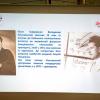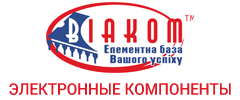Збирач потоків
Софія Жолтайли: "Я не можу жити без творчості"
Завітавши до КПІ, я одразу відчула, що це саме моя альма-матер. Мене дуже привітно зустріли у приймальній комісії, на факультеті, і, якоїсь миті здалось, наче для мене були відкриті всі університетські двері. Романтика перших днів перебування у кампусі є незабутньою.
Norwegian drinking water utility testing UV-C LEDs in pilot project for large-scale water disinfection
Володимир Хільчевський: від "чорнопіхотинця" до професора
У залі рідкісних книг Науково-технічної бібліотеки ім. Г.І. Денисенка 20 лютого відбувся круглий стіл, присвячений визначному українському науковцю у галузі технології машинобудування, професору, солдату Другої світової війни Володимирові Хільчевському.
Peak power point

Imagine that you have a voltage source in series with some source resistance feeding power to a variable load. The relationship between load voltage, load current, and cell current can be drawn as follows in Figure 1.
 Figure 1 The load voltage versus cell and load current for a circuit where the voltage source is in series with some source resistance feeding power to a variable load.
Figure 1 The load voltage versus cell and load current for a circuit where the voltage source is in series with some source resistance feeding power to a variable load.
If by multiplying load voltage times load current, we examine power delivery to the load versus load resistance where the result is a curve that looks like an upside-down soup bowl (Figure 2).

Figure 2 Power to the load (load voltage*load current) versus cell and load current.
For some specific source resistance value, we can plot a horizontal line on our graph (Figure 3).

Figure 3 Adding a specific numerical value for the source resistance.
If we next add a curve to plot the varying load resistance value (Figure 4), we find that the point of maximum power delivery to the load corresponds to equality between the load resistance to the source resistance. Of course, this is expected to be so, but we should also note that the equality of interest is really between the load resistance and the dynamic value of the source resistance as opposed to that part’s value of static resistance.

Figure 4 Discovery of the peak power point by finding the equality between the load resistance to the source resistance.
This last remark may seem trivial, but as we shall now show, it is NOT trivial at all.
From Linear Technology (a name of fond memory today) at this now inoperative URL, we had the following sketch of a photovoltaic (PV) assembly’s characteristics shown in Figure 5.
 Figure 5 Solec S-70C PV panel power curve while facing the sun.
Figure 5 Solec S-70C PV panel power curve while facing the sun.
Graphically extracting some numbers from the current versus voltage curve and fitting a descriptive equation to those numbers, we find the following in Figure 6.

Figure 6 A numerical representation of the PV device shown in Figure 5.
Again, we multiply the load voltage times the cell and load current to see the curve of the power delivery to the load and we also draw the dynamic resistance of the photovoltaic device (Figure 7).

Figure 7 Current, power and dynamic resistance curves for the Solec S-70C PV device, the dynamic resistance of the PV here is no longer the static horizontal line we saw in Figure 3.
Note now that the dynamic resistance of the photovoltaic device is not a horizontal line. The dynamic resistance of the photovoltaic device is now a variable. We also note that the power curve is no longer symmetrical but has instead taken a lean over to the viewer’s right.
Identifying the point of maximum power to the load or identifying the peak power point, we see the following in Figure 8.

Figure 8 Discovery of the peak power point for the Solec S-70C PV device.
We find that the peak power point is located where the load resistance equals the dynamic source resistance of the PV device.
If you want to get as much power delivery as possible out of a PV device, the load resistance needs to match the dynamic source impedance of that device.
Please note that in order to make these sketches more viewable, the vertical axis presentation of resistance is not linear in Ohms but has been made proportional to log (1+Ohms).
John Dunn is an electronics consultant, and a graduate of The Polytechnic Institute of Brooklyn (BSEE) and of New York University (MSEE).
Related Content
- Increase efficiency of street-light solar panels using a maximum peak-power tracker
- How to design a Li-Ion battery charger to get maximum power from a solar panel
- Solar day-lamp with active MPPT and no ballast resistors
- Solar-mains hybrid lamp
- Solar-array controller needs no multiplier to maximize power
The post Peak power point appeared first on EDN.
Modded Raspberry Pi 500 – Now with 2TB NVMe!
 | submitted by /u/WarsawMaker [link] [comments] |
Top 10 eSIM Manufacturers in India
The evolution of embedded SIM (eSIM) technology has significantly transformed the telecommunications landscape, offering enhanced flexibility and efficiency in device connectivity. India, with its burgeoning tech industry, has seen the emergence of several key players in the eSIM domain. Here’s an overview of the top eSIM manufacturers and providers operating in India:
- Cavli Wireless
Founded in 2017, Cavli Wireless is an American technology company with a significant presence in India. The company specializes in developing cellular IoT modules integrated with eSIM technology, catering to various sectors, including industrial applications and automotive industries. Cavli’s product lineup features the C-Series for industrial use and the A-Series tailored for automotive applications. Their commitment to innovation is evident with the introduction of products like the CQS315 LTE Cat 4 Smart Module and the CQM220 5G RedCap Module. Cavli’s strategic collaborations, such as with Orange Business Services for LTE-M connectivity, underscore their dedication to advancing IoT solutions globally.
- TRASNA Solutions
Established in 2018, TRASNA Solutions is a global entity specializing in semiconductor technologies, including SIM, eSIM, System on Chip (SoC), and integrated SIM (iSIM) solutions for IoT and mobile-connected devices. The company has a notable presence in India, contributing to the local eSIM ecosystem. TRASNA’s portfolio encompasses secure microcontrollers, embedded modules, and a cloud-based eSIM platform, addressing challenges in the IoT sector by offering cost-effective and efficient solutions. Their recent acquisition of Workz, a cloud eSIM technology company, highlights their commitment to expanding eSIM services.
- Zetexa
Zetexa, founded in 2023 in Bangalore, focuses on providing mobile internet connection services for tourists and international travellers through their international eSIM offerings. By simplifying connectivity for travellers, Zetexa addresses the growing demand for seamless mobile internet access without the need for physical SIM cards.
- Kigen
Kigen plays a pivotal role in empowering India’s secure eSIM ecosystem. Their eSIM Secure OS is optimized for efficiency and is certified on various leading chipsets and modules, facilitating easier manufacturing and adoption of eSIM technology. Kigen’s focus on security and efficiency positions them as a key contributor to India’s eSIM landscape.
- Airtel
Bharti Airtel, one of India’s leading telecommunications providers, offers eSIM services to its customers. Airtel’s eSIM provisioning allows users to activate cellular plans without physical SIM cards, enhancing user convenience and supporting the adoption of modern, SIM-less devices.
- Reliance Jio
Reliance Jio, a major telecom operator in India, provides eSIM services, enabling users to activate Jio plans on eSIM-compatible devices. This service aligns with Jio’s vision of promoting digital connectivity and catering to the evolving needs of tech-savvy consumers.
- Vodafone Idea (Vi)
Vodafone Idea, operating as Vi, offers eSIM services to its subscribers. By facilitating eSIM activation, Vi ensures that customers with compatible devices can enjoy seamless connectivity without relying on physical SIM cards.
- Sim Local
Sim Local provides eSIM solutions tailored for travellers in India. Their services ensure that tourists and international visitors can access reliable mobile connectivity without the hassle of obtaining physical SIM cards upon arrival. Sim Local’s focus on convenience makes them a notable player in the eSIM market for travellers.
- Airalo
Airalo offers eSIM solutions that cater to global travellers, including those visiting India. Their platform allows users to download eSIMs for various countries, providing affordable data plans and eliminating the need for physical SIM cards. Airalo’s user-friendly approach has made it a popular choice among international travellers seeking connectivity in India.
- Holafly
Holafly specializes in providing eSIM services for travellers, offering data plans for numerous destinations, including India. Their eSIM solutions are designed for easy activation and provide reliable internet access, catering to the needs of tourists and business travellers alike.
In conclusion, India’s eSIM landscape is shaped by a diverse array of manufacturers and service providers, ranging from global technology firms to local telecom operators. This diversity ensures that consumers and businesses have access to a wide spectrum of eSIM solutions, fostering enhanced connectivity and supporting the country’s digital transformation.
The post Top 10 eSIM Manufacturers in India appeared first on ELE Times.
Understanding PCB Soldering: Process, Applications, Advantages, and Challenges
Printed Circuit Board (PCB) soldering is a fundamental process in electronics manufacturing, where electronic components are securely attached to a PCB using molten solder. This process ensures electrical conductivity and mechanical stability, allowing components to function properly within a circuit. Soldering plays a crucial role in assembling various electronic devices, from consumer gadgets to industrial and automotive electronics.
How PCB Soldering WorksPCB soldering involves heating a metal alloy (solder) until it melts and flows into the joints between the electronic components and the copper traces of the PCB. As the solder cools, it solidifies, creating a strong electrical and mechanical connection. The process requires precision to avoid short circuits or weak connections that could lead to malfunctioning circuits.
There are two primary types of PCB soldering: Through-Hole Soldering (THS) and Surface Mount Soldering (SMS). Through-hole soldering involves inserting component leads into drilled holes on the PCB and then soldering them, whereas surface mount soldering involves mounting components directly onto the PCB surface without the need for drilled holes.
PCB Soldering ProcessThe soldering process involves multiple steps to ensure a reliable connection between the PCB and its components. Here’s a breakdown of the process:
- Preparation: The PCB surface and component leads are cleaned to remove any oxidation, dust, or residues that may interfere with soldering.
- Applying Flux: Flux is used to facilitate solder flow and prevent oxidation during the soldering process. It helps create a strong bond between the solder and the PCB.
- Heating: A soldering iron, reflow oven, or wave soldering machine heats the solder to its melting point. The temperature control is crucial to avoid damaging the PCB or components.
- Applying Solder: The molten solder is applied to the component joints, ensuring even distribution for a strong connection.
- Cooling and Solidification: Once the solder cools, it hardens, forming a durable electrical and mechanical bond between the PCB and the components.
- Inspection and Testing: The solder joints are inspected for defects such as cold joints, solder bridges, or incomplete connections. Automated testing may also be performed to verify electrical functionality.
PCB soldering is a vital process across various industries, enabling the production of a wide range of electronic devices. Some common applications include:
- Consumer Electronics: Smartphones, laptops, televisions, and gaming consoles rely on PCB soldering for compact and reliable electronic circuits.
- Automotive Electronics: Modern vehicles incorporate sophisticated electronic control units (ECUs), sensors, and infotainment systems, all assembled using PCB soldering.
- Industrial Automation: Robotics, control systems, and automation equipment depend on PCB soldering for precision and durability.
- Medical Devices: Advanced medical equipment, such as pacemakers, MRI machines, and diagnostic tools, require high-quality PCB soldering for safety and performance.
- Aerospace and Defense: High-reliability PCB soldering is essential in avionics, military-grade electronics, and space applications, where precision and durability are critical.
PCB soldering offers several benefits that make it indispensable in electronics manufacturing:
- Strong Electrical Connections: Ensures reliable signal transmission and minimal electrical resistance.
- Compact and Lightweight Designs: Surface mount soldering allows for miniaturization of electronic devices without compromising performance.
- Mass Production Efficiency: Automated soldering techniques enable large-scale manufacturing with consistent quality and precision.
- Enhanced Durability: Well-soldered components withstand mechanical stress, temperature variations, and environmental factors.
- Cost-Effectiveness: Soldering allows for efficient assembly, reducing production costs in electronics manufacturing.
Despite its advantages, PCB soldering comes with some challenges and limitations:
- Thermal Stress on Components: Excessive heat during soldering can damage sensitive components, affecting their lifespan.
- Solder Defects: Issues such as cold joints, solder bridges, or voids can lead to circuit failures and require rework.
- Environmental Concerns: Traditional lead-based solder poses environmental and health risks, necessitating the use of lead-free alternatives.
- Complexity in Multi-Layer PCBs: Soldering advanced PCBs with multiple layers and fine-pitch components requires high precision and expertise.
- Initial Setup Cost: Advanced soldering equipment, such as reflow ovens and wave soldering machines, can be expensive for small-scale manufacturers.
PCB soldering is a critical process that enables the manufacturing of modern electronic devices. With advancements in soldering techniques and materials, manufacturers can achieve high-quality, reliable electronic assemblies. As the industry moves towards lead-free and automated soldering solutions, innovation in PCB soldering will continue to drive the evolution of electronic technology.
The post Understanding PCB Soldering: Process, Applications, Advantages, and Challenges appeared first on ELE Times.
Sumitomo Chemical exhibiting compound semiconductor products at APEC
ROHM showcasing latest power electronics at APEC 2025
Luminus adds SFT-12R and SFT-25R to round LED range for premium outdoor lighting
🎥 Студенти КПІ ім. Ігоря Сікорського досліджують можливості інноваційних технологій у відновлюваній енергетиці
🇪🇸 Іспанський винахідник і засновник компанії XIZAN Луїс Касла особисто привіз до Київської політехніки мобільні сонячні генератори My Solar Plant – вдале рішення для автономного енергопостачання, яке готове до масштабування.
NUBURU completes first acquisition step in defense and security sector
UK can lead in power electronics for data centers, reckons CSA Catapult
Infineon’s battery backup unit roadmap for AI data centers includes first 12kW BBU
Intel’s new CEO: What you need to know

Lip-Bu Tan, who has exposure to both chip design and chip manufacturing worlds due to his CEO stint at EDA powerhouse Cadence, is taking the reins of Intel after Pat Gelsinger was forced out by the Intel board a few months ago. Sally Ward-Foxton takes a closer look in her EE Times piece at what led to Tan’s appointment. She argues that his former leadership roles make him a suitable person to lead Intel, currently torn between its shrinking position in CPU design and its ambitious foray into the foundry business.
Read the full story at EDN’s sister publication, EE Times.
Related Content
- Intel Foundry Embraces ARM: Start of the End?
- Intel: Gelsinger’s foundry gamble enters crunch
- Pat Gelsinger: Return of the engineer CEO that wasn’t
- Intel CEO’s Departure Leaves Top U.S. Chipmaker Adrift
- Intel Halts Products, Slows Roadmap in Years-Long Turnaround
The post Intel’s new CEO: What you need to know appeared first on EDN.
eevBLAB 125 - Deep Cycle Systems DCS Defamation Lawsuit WIN!
Aperture Trash Can
 | submitted by /u/Blytical [link] [comments] |
Поглиблюємо наукові та дослідницькі звʼязки з провідними компаніями Туреччини
🇺🇦🇹🇷 Сьогодні наш університет став першим місцем під час візиту до України, яке відвідала делегація RST Technology на чолі з президентом компанії Кенаном Озкапіджі та ONUR Group Companies разом з її засновником і президентом Онуром Четінджевізом
Quad Isolated Serial Adapter (revision 2)
 | submitted by /u/SIrawit [link] [comments] |
100-MHz VFC with TBH current pump

Famous analog designer and author Jim Williams published an awesome design in 1986 for a 100-MHz voltage to frequency converter. He named this high-climber (picture it on the roof of the Empire State building swatting biplanes out of the air) King Kong! He followed Kong in 2005 with a significantly updated successor, “1-Hz to 100-MHz VFC features 160-dB dynamic range.”
I was fascinated by both of these impressive designs because they were way faster than any other VFC I’d ever seen! Another two decades passed before I decided to try for a 9-digit VFC of my own.
Wow the engineering world with your unique design: Design Ideas Submission Guide
Here’s the result (Figure 1).
 Figure 1 This simple VFC borrows some of Williams’ pioneering speed ideas and combines them with a few tricks of my own to reach the high altitude of a 100-MHz full scale frequency.
Figure 1 This simple VFC borrows some of Williams’ pioneering speed ideas and combines them with a few tricks of my own to reach the high altitude of a 100-MHz full scale frequency.
The Q1, D1, and Schmitt trigger U1 make a sloppy but tight and speedy VFC which is then accurized by the feedback loop comprising prescaler U3, take-back-half (TBH) charge pump D1-D4, and integrator A1. The preaccumulator U2 interfaces the 100 MHz count rate to moderate speed (~6.25 MHz) counter timer peripherals without losing resolution.
The core of Figure 1’s circuit is a very simple Q1, U1, D5 ramp-reset oscillator. Q1’s collector current discharges the few picofarads of stray capacitance provided by its own collector, Schmitt trigger U1’s input, D5, and their interconnections (as short and direct as possible, please!). U1’s sub-five-nanosecond propagation delay allows the oscillation to run from a dead stop (possible due to leakage draining R4) to beyond 100 MHz.
During each cycle, when Q1 ramps U1 pin1 down to its trigger level, U1 responds with a ~5 ns ramp reset feedback pulse through Schottky D5. This pulls pin 1 back above the positive trigger level and starts the next oscillation cycle. Because the ramp-down rate is (more or less) proportional to Q1’s base current, which is approximately proportional to integrator A1’s output voltage, oscillation frequency is likewise. The caveat is “approximately”.
The feedback through the TBH pump, summation with the R1 input at integrator A1’s noninverting input, the output to Q1 and thence to U1 pin 1 converts “approximately” to “accurately”. One item that lets this VFC work in Kong’s frequency domain but with a considerably simpler parts count is the self-compensating TBH diode charge pump described in an earlier design idea (DI): “Take-back-half precision diode charge pump.”
So, what’s U3 doing?
The TBH pump’s self-compensation allows it to accurately dispense charge at 25 MHz or so but 100 MHz would definitely be asking too much. U3’s two-bit prescaler addresses this problem. U3 also provides an opportunity (note jumper J1) to substitute a high quality 5.000v reference for the likely lesser accuracy of the generic 5v rail.
Figure 2 shows a 250-kHz diode charge pump boosting the 5v rail to about 8v which is then regulated down to a precision 5.000 by U4. U3 current demand, including pump drive, is about 23 mA at 100 MHz; U4 isn’t rated for quite that heavy a load, so buddy resistor R6 takes up the slack.

Figure 2 A 250-kHz diode charge pump Rail booster bringing rail to 8V which is then regulated down to a precision 5.000 V reference by U4.
The 16x preaccumulator U2 allows use of moderate performance counter-timer peripherals as slow as 6.25 MHz to acquire the full-scale 100-MHz VFC output. That idea is described in an earlier DI: “Preaccumulator handles VFC outputs that are too fast for a naked CTP to swallow.”
Stephen Woodward’s relationship with EDN’s DI column goes back quite a long way. Over 100 submissions have been accepted since his first contribution back in 1974.
Related Content
- 1-Hz to 100-MHz VFC features 160-dB dynamic range
- Take-Back-Half precision diode charge pump
- Preaccumulator handles VFC outputs that are too fast for a naked CTP to swallow
- 80 MHz VFC with prescaler and preaccumulator
- 20MHz VFC with take-back-half charge pump
The post 100-MHz VFC with TBH current pump appeared first on EDN.







